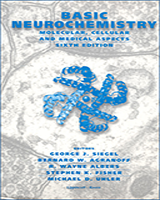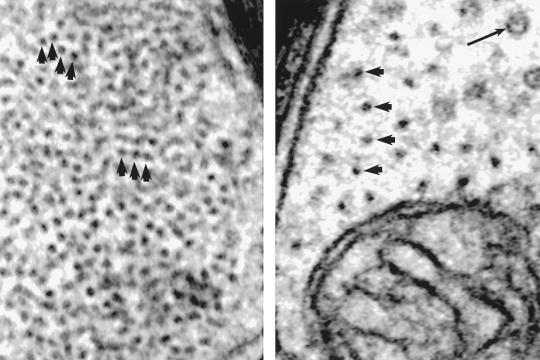From: Molecular Components of the Neuronal Cytoskeleton

NCBI Bookshelf. A service of the National Library of Medicine, National Institutes of Health.

Glial filaments and neurofilaments are easily recognized in electron micrographs. The glial filaments lack side arms and often appear to be densely packed, with neighboring subunits almost touching (large arrows in left panel). In contrast, the spacing between neurofilaments is typically much greater (large arrows in right panel). This spacing is due to the side arms of neurofilaments formed by the tails of the high- and medium-molecular-weight neurofilaments (NFH and NFM, respectively). These tails are heavily phosphorylated in large axons such that NFH tails may have 50 or more phosphates added to the multiple repeats of a consensus phosphorylation site. NFM tails have fewer sites and typically only ten to twelve phosphates. Charges on the surface of phosphorylated neurofilaments are thought to repel neighboring filaments, creating the large spacing. For comparison, a 25-nm microtubule is indicated in the right panel (thin arrow). (Micrograph provided by H. Ross Payne and Scott Brady.)
From: Molecular Components of the Neuronal Cytoskeleton

NCBI Bookshelf. A service of the National Library of Medicine, National Institutes of Health.